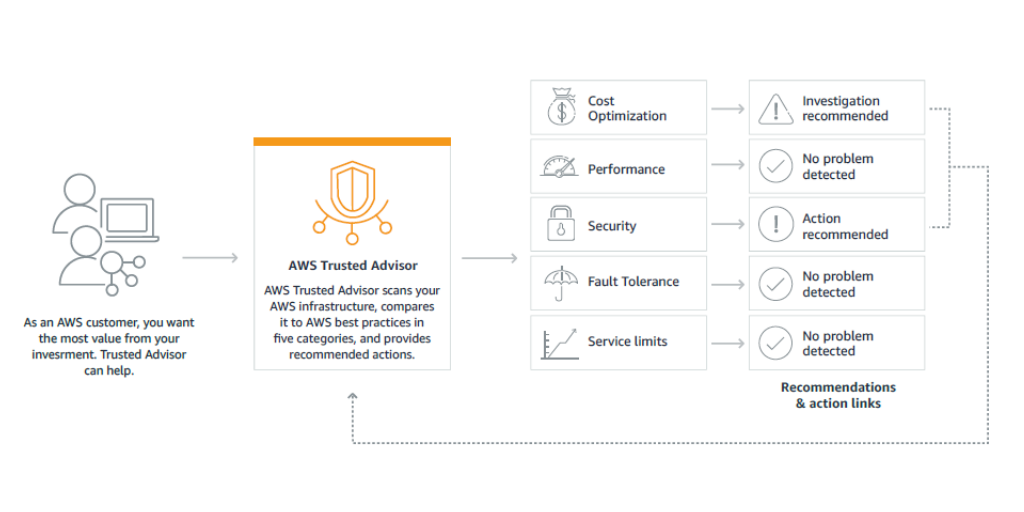AWS Public Sector Blog
Tag: TCO
Working backwards from generative AI business value in the public sector
Generative artificial intelligence (AI) has captured the imagination of organizations across industries, promising to revolutionize workflows and drive innovation. As public sector entities explore this transformative technology, a critical challenge emerges: identifying and prioritizing high-value use cases that align with specific business objectives and delivering measurable outcomes. In this post, we present an Amazon Web Services (AWS) framework to help public sector organizations navigate generative AI adoption and unlock its true potential.
AWS Secure Environment Accelerator (ASEA) connectivity with VMware Cloud on AWS
The AWS Secure Environment Accelerator (ASEA) landing zone helps customers deploy and operate a secure multi-account, multi-Region AWS environment. Governments in Canada and others around the world currently use the ASEA, with over 30 deployments to date. Some of these same customers also use VMware Cloud on AWS to integrate on-premises vSphere environments, allowing them to move existing workloads to the cloud more quickly. Integrating your VMware workload with natively managed AWS services can help you reduce your operational overhead and optimize your total cost of ownership (TCO). In this blog post, we review the technical considerations related to integrating your ASEA landing zone with your VMware Cloud on the AWS environment.
How one Caribbean university digitally transformed and saved money by migrating to the cloud
Moving to AWS helped The University of the West Indies, Open Campus (UWIOC) improve performance of systems and operational efficiency while optimizing costs. Learn how UWIOC migrated more than 70 virtual machines, 10 applications, and five networks, plus their Moodle learning management system (LMS) and the UWIOC website, while saving 50 percent total cost of ownership along the way.
Optimize your cloud deployment and find money to fund your mission
Finding IT budget to drive new initiatives can be a challenge, especially for public sector organizations. Most public sector organizations use IT funds for foundational initiatives such as disaster recovery, supporting critical applications, or delivering key collaboration tools. As new priorities emerge, organizations might not have the funds to adopt new workloads or advanced technologies that address urgent, new, or emerging needs. Amazon Web Services (AWS) provides cost optimization tools, services, and guidance to help public sector organizations lower cloud costs so they can better serve their stakeholders and achieve their missions.
In case you missed it: March 2020 top blog posts round up
In March 2020, the AWS Public Sector Blog covered stories on tools that support remote learning and teaching, cloud cost optimization, and achieving five nines in justice and public safety. Check out the top five blog posts of the month.
Cloud economics: The value of a TCO assessment
Whether you’re beginning to think about migrating to the AWS Cloud or already planning your migration, you probably have questions such as how much migrating to the cloud will cost. Determining total cost of ownership (TCO) for a cloud migration project can be challenging when evaluating what-if scenarios, over-provisioning, outdated servers, legacy applications, or spreadsheets of stale data. Learn about some AWS TCO tools and best practices.
TCO and cost optimization: Best practices for managing usage on AWS
While moving to the cloud saves cost when compared to on-premises IT models, it is important to inspect possible mistakes that could lead to unplanned cloud costs. Based on customer cost optimization consultations with AWS, some organizations have seen up to 33% reduction in cloud spending waste. Here we provide some tips and resources to recognize cloud cost optimization. What are some other common oversights customers make that can drive up their cloud spend? Avoid the following missteps.
AWS Cloud Migration Guide: Methodology for migration readiness and cloud adoption
There are many reasons why public sector customers are migrating to the cloud. Some are migrating to increase the productivity of their workforce. Others are looking to consolidate data centers or minimize costly infrastructure sprawl and modernize legacy applications that have lost value over time. Additionally, visionary organizations are re-imagining their missions by upgrading to cloud-hosted technologies that drive digital transformation.
Achieve Total Cost of Operation Benefits Using Cloud
A core reason organizations adopt a cloud IT infrastructure is to save money. The traditional approach of analyzing Total Cost of Ownership no longer applies when you move to the cloud. Cloud services provide the opportunity for you to use only what you need and pay only for what you use. We refer to this […]








